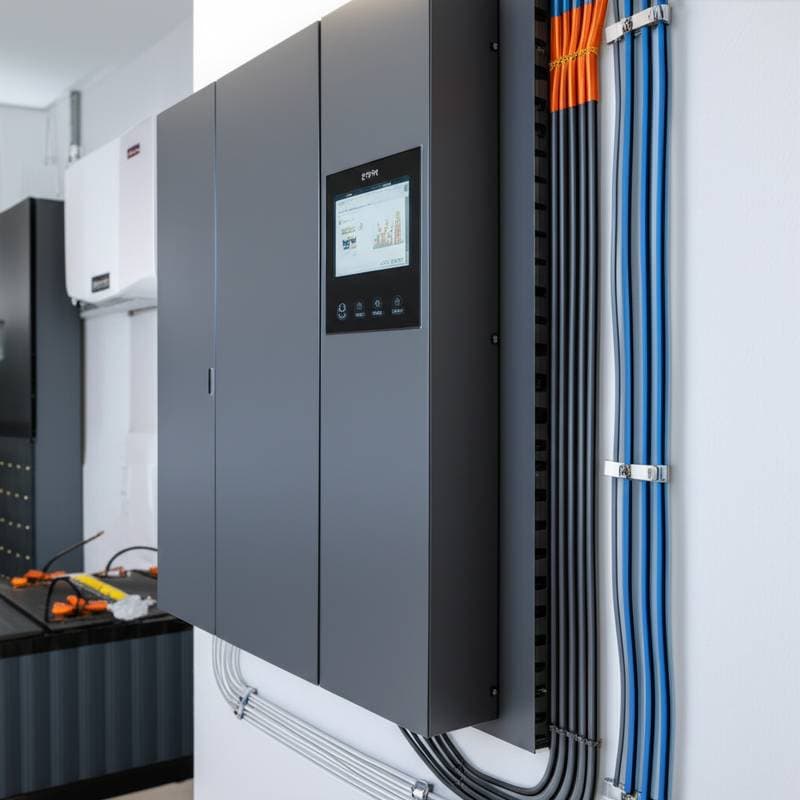How Smart Electrical Panels Slash Energy Bills by 40 Percent Through Circuit Control
Smart electrical panels represent a transformative advancement in home energy management. These systems provide granular control over individual circuits, allowing homeowners to monitor and optimize power usage in real time. By integrating intelligent software and hardware, they deliver substantial savings, often up to 40 percent on energy bills, while enhancing compatibility with renewable sources like solar power.
Understanding Smart Electrical Panels
A smart electrical panel upgrades the traditional breaker box found in most homes. It incorporates sensors, automation capabilities, and connectivity features that track energy consumption at the circuit level. This setup enables users to identify high-usage appliances and adjust operations accordingly, preventing waste and aligning consumption with utility rates.
Unlike basic panels, smart versions connect to mobile apps or home hubs for remote access. Homeowners receive alerts for unusual activity, such as a forgotten device drawing power overnight. This level of insight empowers informed decisions that directly reduce costs.
The Mechanics of Circuit Control
Circuit control forms the core of a smart panel's efficiency. Each breaker links to specific appliances or rooms, and the system monitors voltage, current, and usage patterns continuously. When demand peaks, the panel can automatically shift loads or shut off non-essential circuits to avoid expensive surcharges from utilities.
For instance, during evening hours when rates climb, the panel prioritizes essential lighting and refrigeration while deferring high-draw tasks like laundry. Advanced algorithms predict usage based on historical data, optimizing distribution without manual intervention. This proactive approach ensures balanced power flow and minimizes strain on the electrical infrastructure.
Integration with voice assistants or scheduling software adds further precision. Users set rules, such as limiting air conditioning to certain zones during hot afternoons. Over time, these controls adapt to household routines, maximizing savings with minimal effort.
Pairing with Solar Power and Battery Storage
Smart panels excel when combined with solar installations and battery systems. Solar panels generate electricity during daylight, but usage often peaks at night, creating mismatches. A smart panel directs excess solar energy to batteries for later use, reducing reliance on grid power and lowering bills.
Battery storage captures surplus production, releasing it during high-rate periods. The panel coordinates this flow, ensuring solar benefits extend throughout the day. This synergy can amplify savings beyond 40 percent in sunny regions, as it offsets peak consumption entirely.
Moreover, the system extends equipment lifespan by preventing overloads. Solar inverters communicate with the panel to balance inputs, avoiding fluctuations that degrade components. Homeowners gain a resilient setup that weathers outages and supports sustainable living.
Key Benefits for Homeowners
The primary advantage lies in cost reduction. By curbing unnecessary usage and leveraging off-peak rates, families see immediate drops in monthly expenses. Studies indicate average households save hundreds annually, with solar integration pushing returns even higher.
Environmental impact follows closely. Reduced grid dependence cuts fossil fuel reliance, lowering carbon emissions. Smart panels promote conservation habits, fostering a greener household without sacrificing comfort.
Reliability improves as well. Real-time monitoring detects faults early, preventing fires or blackouts. Insurance providers often offer discounts for such proactive systems, adding financial perks.
- Energy Savings: Up to 40 percent through precise control.
- Sustainability: Decreased emissions via optimized renewables.
- Convenience: App-based management for effortless oversight.
- Durability: Extended life for solar and battery assets.
Steps to Implement a Smart Panel System
Begin by assessing your home's electrical needs. Consult a licensed electrician to evaluate the existing panel's capacity and compatibility. They will determine if an upgrade or full replacement suits your setup.
Next, select a reputable smart panel provider. Look for models certified for safety and integration with major solar brands. Budget for installation, which typically spans one to two days and involves minimal disruption.
Once installed, configure the system via the companion app. Input utility rate schedules and appliance details to enable automation. Test circuits to ensure smooth operation, then monitor initial usage reports for adjustments.
- Schedule a professional assessment.
- Choose and purchase the panel.
- Undergo installation and setup.
- Customize settings for your lifestyle.
- Track performance and refine rules.
Regular maintenance keeps the system performing optimally. Annual inspections verify connections, while software updates introduce new features. This ongoing care sustains long-term efficiency.
Unlocking Long-Term Energy Savings
Adopting a smart electrical panel positions your home as a model of efficiency. It transforms power from a fixed expense into a manageable resource, yielding savings that compound over years. With solar and storage, the setup evolves into a self-sustaining powerhouse.
Homeowners report not only lower bills but also greater control over their energy footprint. This technology bridges convenience and conservation, making sustainable choices accessible. Embrace circuit-level intelligence to power a brighter, more economical future.
